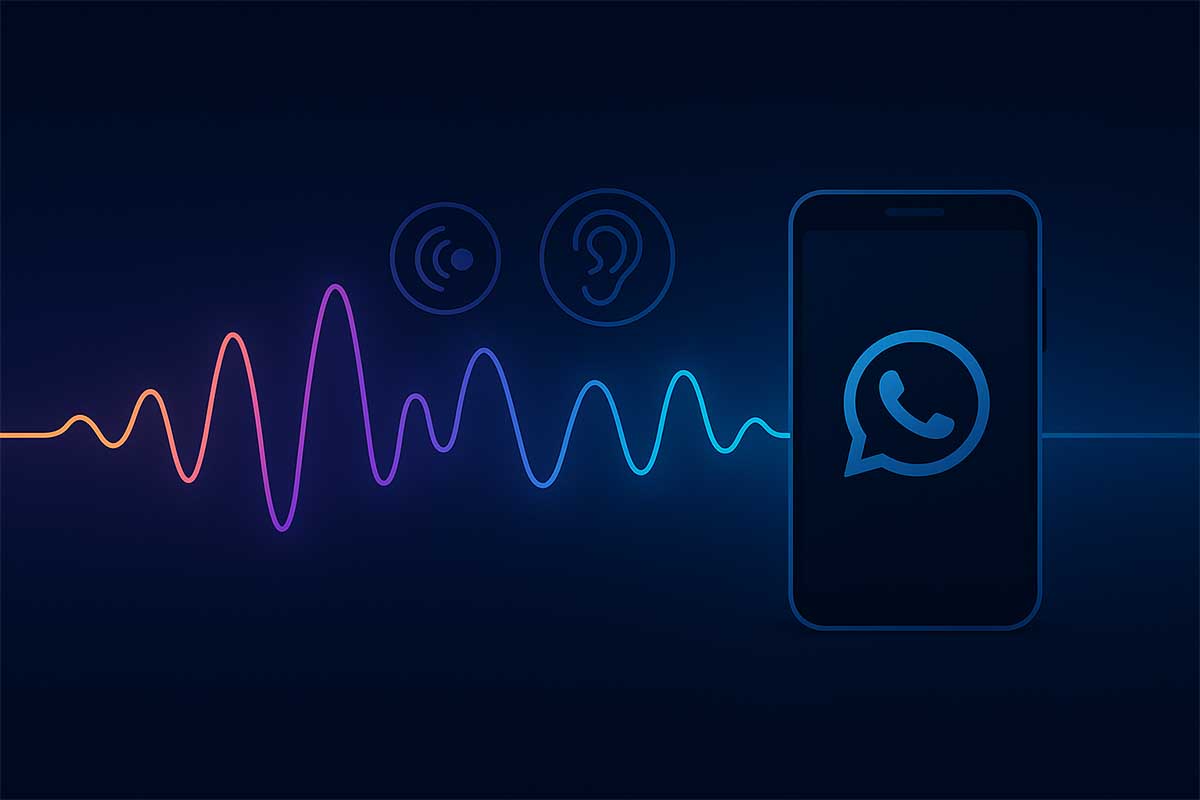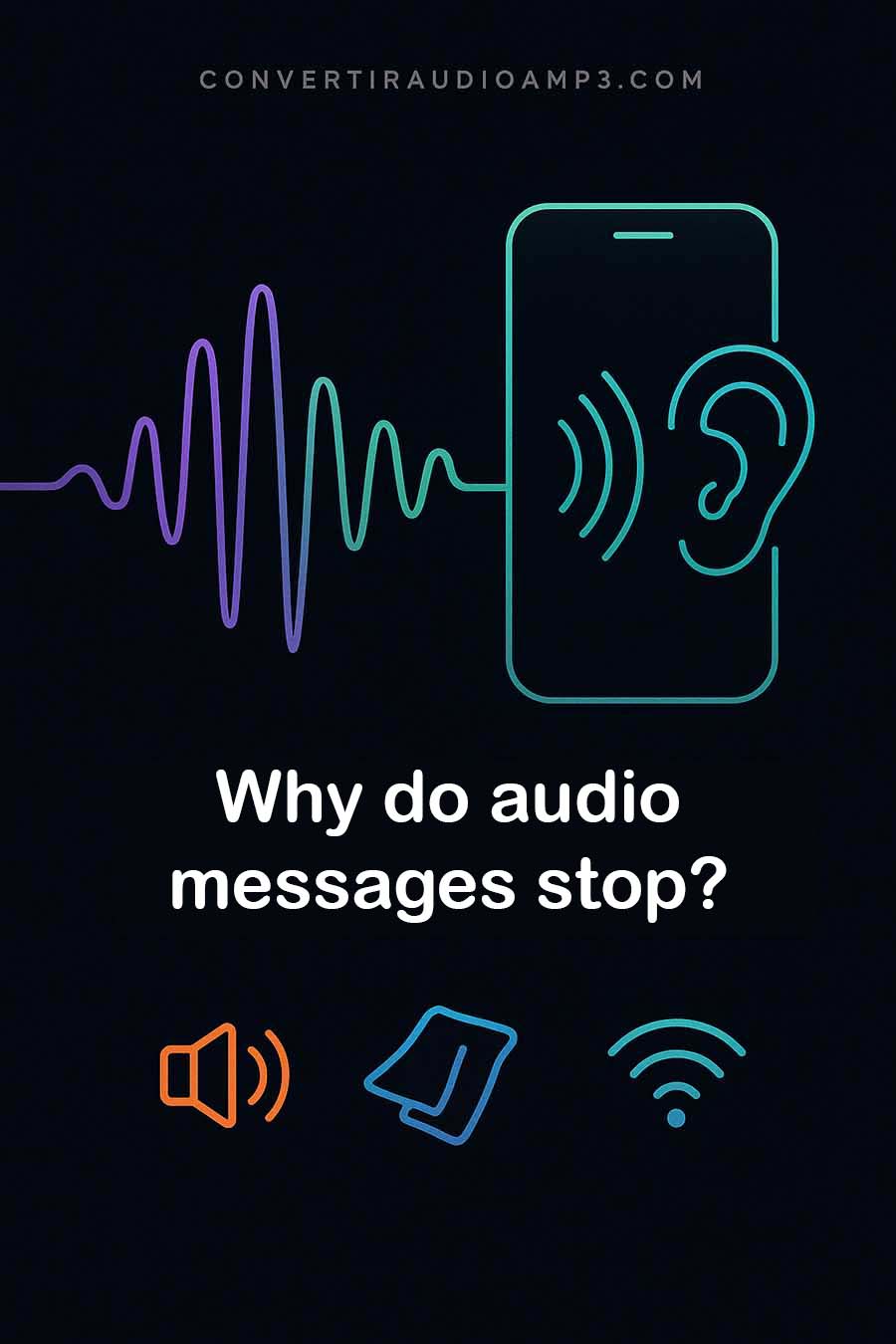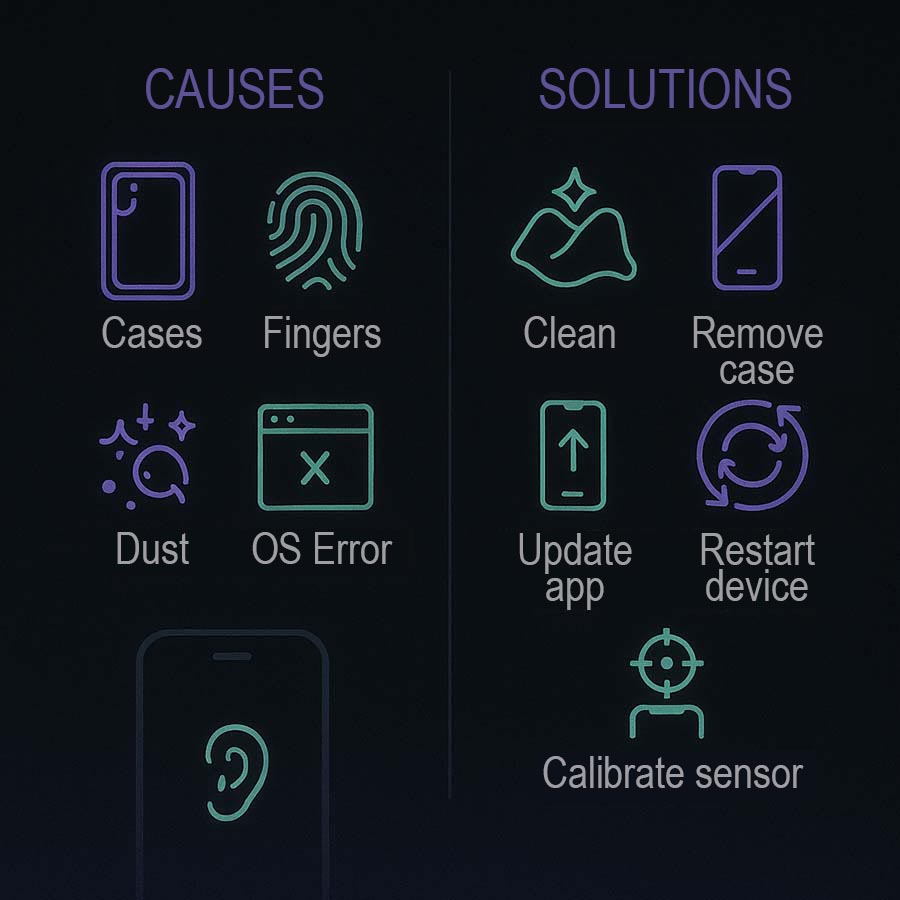Why WhatsApp audios stop — proximity sensor fixes
Have you ever played a WhatsApp audio and suddenly the sound stops and the screen goes dark? That’s not your phone failing—it’s a feature meant to protect your privacy and avoid accidental taps. This guide explains how the proximity sensor works, why it can interrupt your voice notes, and how to fix it step by step.
🔊 Remember: you can also manage your audios
Check our guides to manage your audios with ease
How the proximity sensor works
Most smartphones include a proximity sensor near the earpiece at the top of the screen. It consists of an infrared emitter and receiver: when you bring the phone to your face for a call—or to listen privately to an audio—the emitter sends a signal and the receiver detects the reflection from your skin. If an object is close, the sensor triggers actions: it turns off the display to prevent accidental touches and switches sound from the loudspeaker to the earpiece. This plays the audio at a lower volume, just for you.
WhatsApp uses this to provide privacy for voice notes: when you raise the phone to your ear, the app assumes you want call-style playback and routes audio to the earpiece. The downside appears when the sensor is triggered by mistake: a thick case, a finger over the top area, or even the table surface can reflect the signal, causing the audio to pause and the screen to dim. It’s not a system bug—it’s a normal response to a false positive.
Reasons WhatsApp audios stop
While the proximity sensor is the main factor, several issues can make voice notes cut off:
- Cases and screen protectors: some accessories partially block the sensor, especially thick or opaque ones. If the issue started after changing a case/protector, remove it temporarily to test.
- How you hold the phone: covering the top edge with your fingers makes the sensor think it’s near your face and switches output to the earpiece.
- Sensor calibration: over time, dust buildup, wear, or software updates can degrade accuracy, causing false positives and sudden pauses.
- OS interference: sometimes the phone’s sensor management is at fault. A software bug can alter sensitivity and playback behavior.
- Volume or silent mode: if media volume is too low or the phone is in vibrate/silent, it may seem like playback stopped while it’s just barely audible.
- Poor internet connection: if the file hasn’t fully downloaded, playback will stop at missing segments—common with unstable Wi-Fi/mobile data.
Step-by-step fixes
1) Adjust volume and check sound mode
First, make sure media volume is up and silent/vibrate is off. Many users assume playback stopped when volume is simply too low. If using headphones, ensure they’re not muted. Also verify WhatsApp has the right permissions to play audio.
2) Keep the proximity sensor clear
If you rest the phone on a table or cover the top area while listening, the sensor may trigger. Hold the phone by the sides, avoid covering the earpiece area, and clean it with a dry soft cloth. Remove thick cases/protectors temporarily to test.
3) Check your internet connection
If playback always stops at the same spot, the file may be incomplete. Test your connection (browse, send a message, make a WhatsApp call). Re-try on a stable network; the app often resumes downloads automatically when connectivity improves.
4) Force close and update the app
A transient app bug can affect sensor handling. Fully close WhatsApp and reopen it. On Android, you can clear cache via Settings > Apps > WhatsApp > Storage > Clear cache. Ensure you’re on the latest version—updates fix bugs and improve sensor management.
5) Restart the phone
If nothing helps, restart your device. A reboot resets sensors/hal and can fix OS-related issues. Some Android models include diagnostics to calibrate the sensor—check your device manual or contact support if hardware failure is suspected.
6) Watch for paired Bluetooth devices
If headphones/speakers are paired, audio may route there. If volume seems low or muted, make sure no wireless device is grabbing the audio. Disconnect or power them off when not in use.
Calibrate or disable the proximity sensor
On many Android phones you can temporarily disable the proximity sensor in settings. Location varies by brand/skin, often under Settings > Apps or Settings > Calls. Look for a Proximity sensor toggle in call settings. Note: disabling also affects calls—you might tap the screen with your cheek.
If you can’t find this option or you use an iPhone, there’s no user toggle for the proximity sensor. On iOS, the only options are restarting or, as a last resort, resetting settings. Contact your manufacturer’s support if you suspect hardware damage or if voice notes still stop after all steps above.
Other considerations
WhatsApp voice notes are saved in OPUS—a very efficient codec that may be incompatible with some players. If you want to keep or reuse a note elsewhere, convert it to MP3. You can do this easily with our online tools and guides. If the proximity sensor is physically damaged, you’ll likely need a technician to repair it.
Frequently asked questions
Where is the proximity sensor on my phone?
Usually near the top of the display by the earpiece. Some models hide it in the notch or under the screen. It uses an IR emitter/receiver to detect nearby objects.
Can I disable the sensor without affecting calls?
If you disable it on Android, the screen won’t turn off during calls, so cheek taps may happen. On iOS there’s no toggle; only restart or reset settings.
How do I know if the sensor is damaged?
After cleaning/calibrating, test during a normal call. If the display doesn’t turn off near your face—or doesn’t turn back on when you move away—the sensor may be faulty and require repair.
Is it normal for the audio to sound low when I raise the phone?
Yes. When the sensor triggers, WhatsApp routes audio to the earpiece at a much lower volume for privacy. To return to the loudspeaker, move the phone away from your ear or (Android only) temporarily disable the sensor.
Manage and share your voice notes on any device


